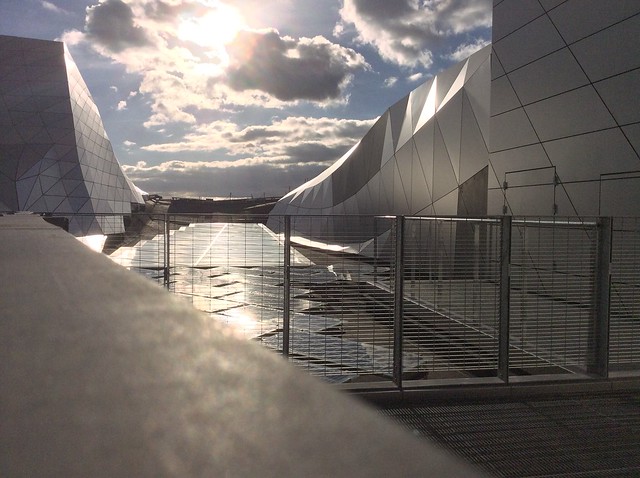Lyon’s new Confluence Museum – a mirror of time
[24 Dec 2014]
The Confluence Museum represents both the grand return of the Guimet Museum of Natural History in Lyon and the rebirth, in the third millennium, of a renaissance-style cabinet of curiosities…
With its opening, a door closes on the Museum of the 20th Century and the migraine du conservateur (curatorial stagnation), while another opens to embrace the diversity of history and civilizations, offering a reflection on what the appropriation of knowledge means for us nowadays, and suggesting that we “train our eyes on rare and beautiful things” in a spirit of uninhibited delight.
The Musée des Confluences ©thierry Ehrmann
A landmark and a symbol
Housed in a jewel of deconstructivist architecture that is itself a stunning technical achievement, the building is a new landmark in the city of Lyon. Monumental buildings have always been strong symbols, rooted to a particular spot and standing witness to a particular era. This was true for the most ancient civilizations and it remains true today, especially since Frank Gehry’s Guggenheim Museum (which opened to the public in 1997) triggered a new architectural momentum that some have referred to as the “Bilbao effect”. And so just a few weeks after the opening of the Vuitton Foundation for Contemporary Art in Paris, a new iconic edifice has appeared on the French architectural landscape: the Confluence Museum, located at the tip of the Lyon peninsula, where the Rhône and the Saône rivers meet.
The new museum’s most singular shape was designed by the Viennese firm Coop Himmelb(I)au as an architectural attempt to defy gravity while expressing a desire for conquest. The building, which looks mobile, transparent and angular, has a total surface area of 22,000 square meters, but the apparent density of a cloud. In fact, the entire structure is a sort of giant “cloud” (that’s what the upper section is called) floating above the ground (it rises 37 meters above the central base) and contains ten exhibition rooms built on two levels. Inside, the space is luxurious and the fluid circulation has been conceived like a flow of energy, with light, transparency and clarity, thanks to the massive use of glass. The intermediate “cristal” section is like a vortex connecting the sky to the ground. The whole project expresses a powerful deconstructivist approach reflecting the notion of a constantly evolving knowledge base.
Architecture supporting knowledge
The building functions equally well as a symbol, a threshold to the imaginary, and as an edifice with a scientific mission, that of a museum. But the mission is no longer to learnedly impose treasures and knowledge on its visitors, but rather to offer a sensory experience. The objective of the Confluence Museum is to redefine the museum experience by allowing visitors to comprehend knowledge via experimentation and direct experience. Taking pictures is allowed (usually prohibited in museums) as is touching certain objects. You can even have a virtual conversation with a hologram of Albert Einstein (among others). The permanent exhibition, spread over 3,000 square meters, is divided into three parts: Origins, Species and Societies. Thousands of items from around the world represent a sort of bank of knowledge – past, present and future – from geology to anthropology, from archaeology to astrophysics, from entomology to traditional arts and crafts by Inuit, Aborigines, Africans, Egyptians, Khmer people and Far Eastern civilisations, etc.
The first level houses the temporary exhibitions. For its opening, the Confluence Museum was bound to honour the man who was at the origin of the project; the man who, in true humanist and fraternal tradition, dreamed it up more than 100 years ago: Emile Guimet.
After 8,000 visitors for the museum’s opening weekend (20-21 December 2014), its management is expecting a modest 500,000 visitors a year; however, it would probably be more realistic to expect an annual visitor total of at least one million.





 0
0
